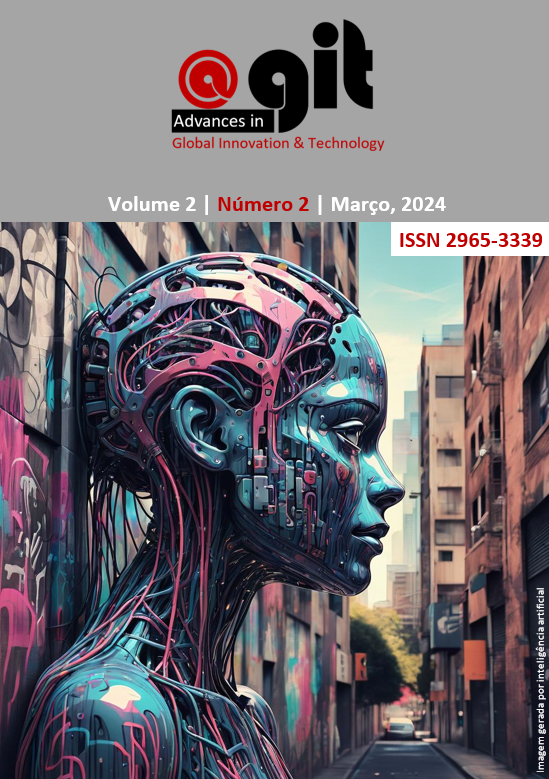Arquitetura para Visualização e Interação com Mapas com Grandes Volumes de Pontos
DOI:
https://doi.org/10.29327/2384439.2.2-11Abstract
According to estimates, 400 exabytes of data will be generated daily in 2025. Such massive scale brings performance and scalability issues, requiring proper solutions. As part of this spatially distributed data is widely used in areas such as geoprocessing, it is also necessary to pay attention to presentation and usability techniques. This paper details a scalable, extensible, Cloud based software architecture for large scale geographical data processing and visualization. The proposed solution was developed based on the authors' joint experience in two geographic visualization solutions, which are also discussed in order to propose improvements and perspectives for future implementations. The primary stages of user interaction with spatial data were considered: obtaining, grouping, displaying and recording events. I raise the main architectural issues, which gave rise to common functional and non-functional requirements for both projects.
Downloads
References
ALT, Rainer; HUMAN, Soheil; NEUMANN, Gustaf. End-user Empowerment in the Digital Age. Proceedings of the 53rd Hawaii International Conference on System Sciences, 2020.
AMAZON. AWS Application Auto Scaling. 2023. Disponível em: https://aws.amazon.com/autoscaling/. Acesso em: 26 set. 2023.
AMAZON. Managed Kubernetes Service - Amazon EKS Features. 2023. Disponível em: https://aws.amazon.com/eks/features/. Acesso em: 26 set. 2023.
BROWN, Kyle et al. Implementation Patterns for Microservices Architectures. Conference on Pattern Languages of Programs, 2016.
DELORT, J. Visualizing large spatial datasets in interactive maps. In: 2010
SECOND INTERNATIONAL CONFERENCE ON ADVANCED GEOGRAPHIC INFORMATION SYSTEMS, APPLICATIONS, AND SERVICES, 2010, [S.l.]. Anais [...]. [S.l.]: [s.n.], 2010. p. 33-38. doi:10.1109/GEOProcessing.2010.13.
DOCKER. Swarm mode overview. 2023. Disponível em: https://docs.docker.com/engine/swarm/. Acesso em: 26 set. 2023.
GOOGLE. Google Kubernetes Service (GKE). 2023. Disponível em: https://cloud.google.com/kubernetes-ngine. Acesso em: 26 set. 2026
GOVENDER, Paulene; SIVAKUMAR, Venkataraman. Application of k-means and hierarchical clustering techniques for analysis of air pollution: a review (1980-2019). Atmospheric Pollution Research, 2020.
HASHEM, Ibrahim Abaker Targio et al. The rise of “big data” on cloud computing: Review and open research issues. Information Systems, 10 ago. 2014.
HUANG, H.; GARTNER, G. A technical survey on decluttering of icons in online map-based mashups. In: ONLINE MAPS WITH APIS AND WEBSERVICES. [S.l.]: Springer, 2012. p. 157-175. doi:10.1007/978-3-642-27485-5_11.
KORPI, J.; AHONEN-RAINIO, P. Clutter reduction methods for point symbols in map mashups. The Cartographic Journal, v. 50, n. 3, p. 257-265, 1 ago. 2013. doi:10.1179/1743277413Y.0000000065.
KUBERNETES. Overview. 2023. Disponível em: https://kubernetes.io/docs/concepts/overvie w/. Acesso em: 26 set. 2023.
LEE, J.-G.; KANG, M. Geospatial big data: challenges and opportunities. Big Data Research, [s.l.], v. 2, n. 2, p. 74-81, jun. 2015. DOI: 10.1016/j.bdr.2015.01.003.
MEERT, W.; TRONÇON, R.; JANSSENS, G. Clustering maps. 2006. Tese (Mestrado) - Katholieke Universiteit Leuven, Leuven, 2006. Disponível em: http://citeseerx.ist.psu.edu/viewdoc/download?doi=10.1.1.132.6977&rep=rep1&type=pdf Acesso em: 28 set 2023.
MICROSOFT. Managed Kubernetes Service (AKS). 2023. Disponível em: https://azure.microsoft.com/en-us/products/kubernetes-service. Acesso em: 26 set.2023.
NIELSEN NORMAN GROUP. Website Response Times. Disponível em: https://www.nngroup.com/articles/website-response-times. Acesso em: 28 set 2023.
PEDROSA, Paulo H. C.; NOGUEIRA, Tiago. Computação em Nuvem. Unicamp. 2011. Disponível em: https://www.ic.unicamp.br/~ducatte/mo40/1s2011/T2/Artigos/G04-095352-120531-t2.pdf. Acesso em: 26 set. 2023.
RAZAVIAN, Maryam; PAECH, Barbara; TANG, Antony. Empirical Research for Software Architecture Decision Making, An Analysis. The Journal of Systems & Software, 2019.
SVENNERBERG, G. Handling large amounts of markers in google maps – in usability we trust. 2009. Disponível em: http://www.svennerberg.com/2009/01/handling-large-amounts-of-markers-in-google-maps. Acesso em: 28 set. 2023.
TAYLOR, Petroc. Amount of data created, consumed, and stored 2010-2020, with forecasts to 2025. Statista, 22 ago. 2023. Disponível em: https://www.statista.com/statistics/871513/worldwide-data-created. Acesso em: 28 set 2023.
XU, Rui; WUNSCH, Donald. Survey of Clustering Algorithms. IEEE Transactions on Neural Networks, 2005
SILVA, F. D. Trabalhos científicos. 2. ed. São Paulo: Genérica, v. 1, 2018.
Downloads
Published
How to Cite
Issue
Section
License
Copyright (c) 2024 Yehoshua Edson Oliveira Silva, Felipe Alves da Silva, Leandro Luque

This work is licensed under a Creative Commons Attribution-NonCommercial-ShareAlike 4.0 International License.
Copyright Policy
By submitting a manuscript for publication in the journal Advances in Global Innovation & Technology (@_GIT), authors agree, in advance and unrestrictedly, to the following terms:
- The authors retain the copyright and grant to the Journal Advances in Global Innovation & Technology (@_GIT) the right of first publication of the manuscript, without any financial burden, and waive any other remuneration for its publication in the Journal of Advances in Global Innovation & Technology (@_GIT).
- Upon submission to the Journal of Advances in Global Innovation & Technology (@_GIT), the manuscript is automatically licensed under the Creative Commons Attribution License, which allows the sharing of the work with acknowledgment of authorship and initial publication in the Journal Advances in Global Innovation & Technology (@_GIT).
- Authors are authorized to enter into additional contracts separately, for non-exclusive distribution of the version of the work published in the Journal Advances in Global Innovation & Technology (@_GIT) (publish in repositories or as a book chapter), with acknowledgment of the initial publication in the Journal Advances in Global Innovation & Technology (@_GIT), provided that such agreement does not imply an endorsement of the content of the manuscript or the new vehicle by the Journal of Advances in Global Innovation & Technology (@_GIT).
- Authors are allowed and encouraged to publish and distribute their work online, in institutional repositories, for example after the editorial process is completed.
- The authors warrant that they have obtained proper permission from their employers for the transfer of rights under this agreement, if those employers own any copyright in the manuscript. In addition, the authors assume any and all responsibility for possible copyright infringements of these employers, exempting Advances in Global Innovation & Technology (@_GIT) from any and all liability in this regard.
- The authors assume all responsibility for the content of the work, including the due and necessary authorizations for the disclosure of data collected and results obtained, exempting the Journal of Advances in Global Innovation & Technology (@_GIT) from any and all liability in this regard.













